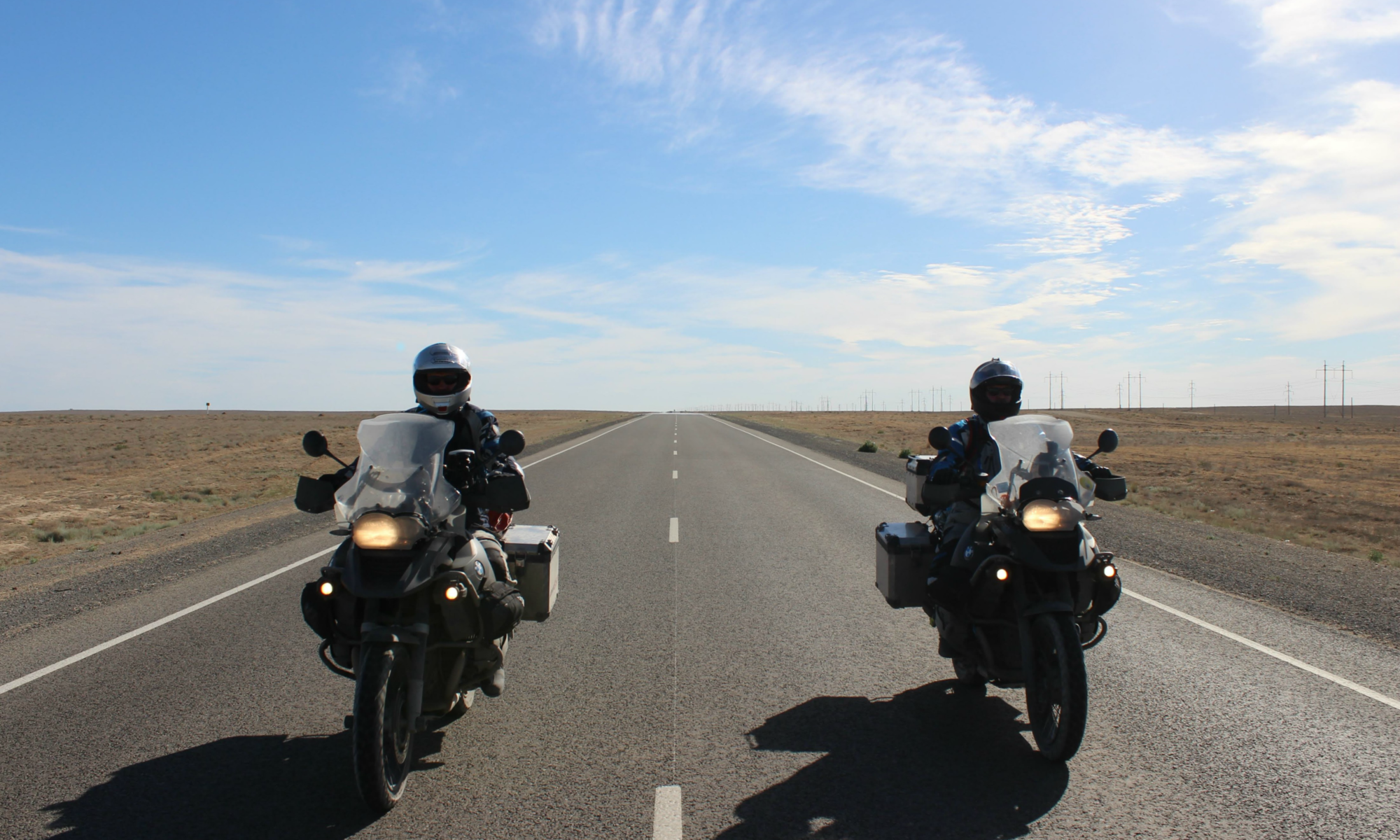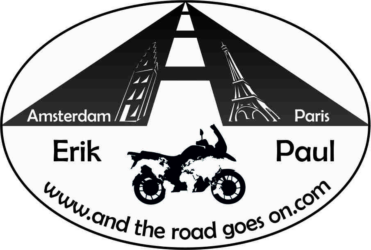Central Asia. I have been looking forward to crossing the Caspian Sea for a long time. Although we already put more than 6000 km behind us, for some reason Turkey, Georgia and even Azerbaijan still felt a bit like Europe, especially Baku. You could already see the Persian influences in the faces, but here, on the right side of the Caspian Sea it is really different. The landscape, the faces, the languages and typography, the roads and the temperature.
We arrived in Aktau, and after our adventures dealing with Kazach customs we did not have high hopes for the rest. But I was wrong, the Kazach people are very friendly, as are all people we have met so far. One thing I have noticed travelling east – people get friendlier and friendlier, everybody waves, they smile, come up to you, talk to you, shake your hand, want to know where you are from. And people look you in the eye, and do not avert their gaze, something we are not used to anymore. It almost makes me feel uncomfortable.
So we picked a hotel in Aktau, and sat down in the garden terrace for some food and drinks. After the long day of being in a Kafka play we wanted to prepare for the days coming up, which we were both looking forward to but also made us a bit nervous. The worst piece of road that we would get (aside for the unpaved roads on the Pamir Highway and in Mongolia) is between Beyneu, Kazachstan and the Uzbekistan border, and after that there is about 500km of absolutely nothing. No towns, no water, no fuel, just desert and road and sun. Aktau to Beyneu was fine, just a full day of regular desert road. With camels. That is very strange, just seeing camels everywhere, strolling through the heat and the empty landscape. There are also wild horses. How these animals survive is beyond me, since there is hardly any green, let alone water.
On the way from Aktau to Beyneu we made a brief excursion off the main road, just to test our off-road skills and to see a rock formation we read about. We found the road more exciting than the rock formation.
We also met up again with Alissa and Andy, a lovely couple from the UK with whom we made the ferry crossing. In Beyneu we also met Jin, a gentleman from Japan who was riding from Japan to Portugal, and we had a great evening exchanging stories and experiences.
The next morning we left early for the Uzbekistan border, and as soon as we left Beyneu, the road turned into something from a nuclear disaster movie. The road used to be paved with asphalt but probably has not been maintained ever since Breznev was Secretary General of the USSR.
We do have video footage but it does not do the road conditions true justice. It started with reinforced concrete slabs of which the top layer was gone, and the iron bars were visible and sticking out at places. After a few kilometers of that it was 50 km of potholes, bumps, dust, sand, and gravel in all combinations. There is other traffic on that road, from cars to huge trucks, everyone crawls slowly forward. At times we had to stop because we could not see anything in the huge dust clouds and we did not want to drive into holes or bump into oncoming traffic. Because sometimes they also use your side of the road, if the road is slightly better. At times it was actually better to drive in the track next to the road.
One of the better stretches of road:
The Uzbek border entry was absolutely painless – the friendliest so far. I had read stories about them checking your laptop and phone for nudity, going through medication etc, and especially since I brought a drone (which is forbidden in Uzbekistan) I prepared to hand it in.
But they were very friendly, they asked Paul to open a bag, went through it a bit and all was fine. I did not even have to open my bags or put it through the X-ray scanner. We were in Uzbekistan in 45 minutes,
We exchanged some money at the border and purchased insurance for our motorcycles (not sure if we need it but that’s the thing with insurance) and drove off. The road was better, but not a lot. Still a tremendous amount of bad asphalt with random surprise potholes, which can be even more dangerous. You think you can get your speed up and suddenly there is this big hole, which can damage your rim and tires if you cannot avoid the hole. So it was a very long day, but in an amazing landscape. Just empty desert, as far as the eye can see.
We felt it was time to bring out the drone. What better place than the one country where drones are illegal.
After another day of hot and bad desert road we arrived in Khiva, one of the first three legendary cities on the Silk Road in Uzbekistan that we would visit. The other ones are Bukhara and Samarkand.
Khiva is fairly small, but exceptionally well preserved. It does not take a lot of imagination to see the bustling, busy place it must have been in the 16th and 17th century, when it was a famous trading place on the Silk Road. It was especially well known for its slave market. Now it is quite deserted, there are people living in the old part but there is not a lot of life. It does feel like a museum. There are a few tourists, and some souvenir stalls.
There are a few large buildings that dominate the old city, each with a large portal, and sometimes a minaret. We would see this type of Islamic architecture also in Bukhara and Samarkand. In Khiva we again met up with Andy and Alissa again, and had a great evening on the roof terrace having dinner and playing cards.
After Khiva we went to Bukhara, where we also stayed a day and explored the city. Bukhara is larger than Khiva, and has much more life in it than Khiva. It has also large Madrassa’s (Islamic schools) and a large fortress called the Ark. Instead of a lot of text, I will just show you pictures.
Bukhara:
Next up: Samarkand. The largest of the three Silk Road cities, and we did a nice buildup from small to large. The sites in Samarkand are further apart, and larger than the ones in Bukhara and Khiva. We stayed at a lovely hostel with a great garden, so we spent some time relaxing and reading under the cherry and apricot trees. We were lucky with the temperature, the week before it had been 45 degrees, now it was a pleasant 33.
Amongst other sites, we visited the Ulugh Bek Observatory. Ulugh Bek was one of the greatest astronomers of all time, and he lived in Samarkand in the 12 and 13th century. He built the largest quadrant of the world in his time, used to measure the position of celestial bodies.
Klick the photo to see a 360 view from the inside:
Uzbekistan was very nice, the people are incredibly friendly, beautiful architecture – true Central Asia. But by this time, we felt we had enough Islamic architecture so after visiting the highlights of Samarkand it was time to leave for the mountains.


Wow mooie fotos en leuk om te lezen over de plekken waar jullie komen en de ervaringen. Keep it up!